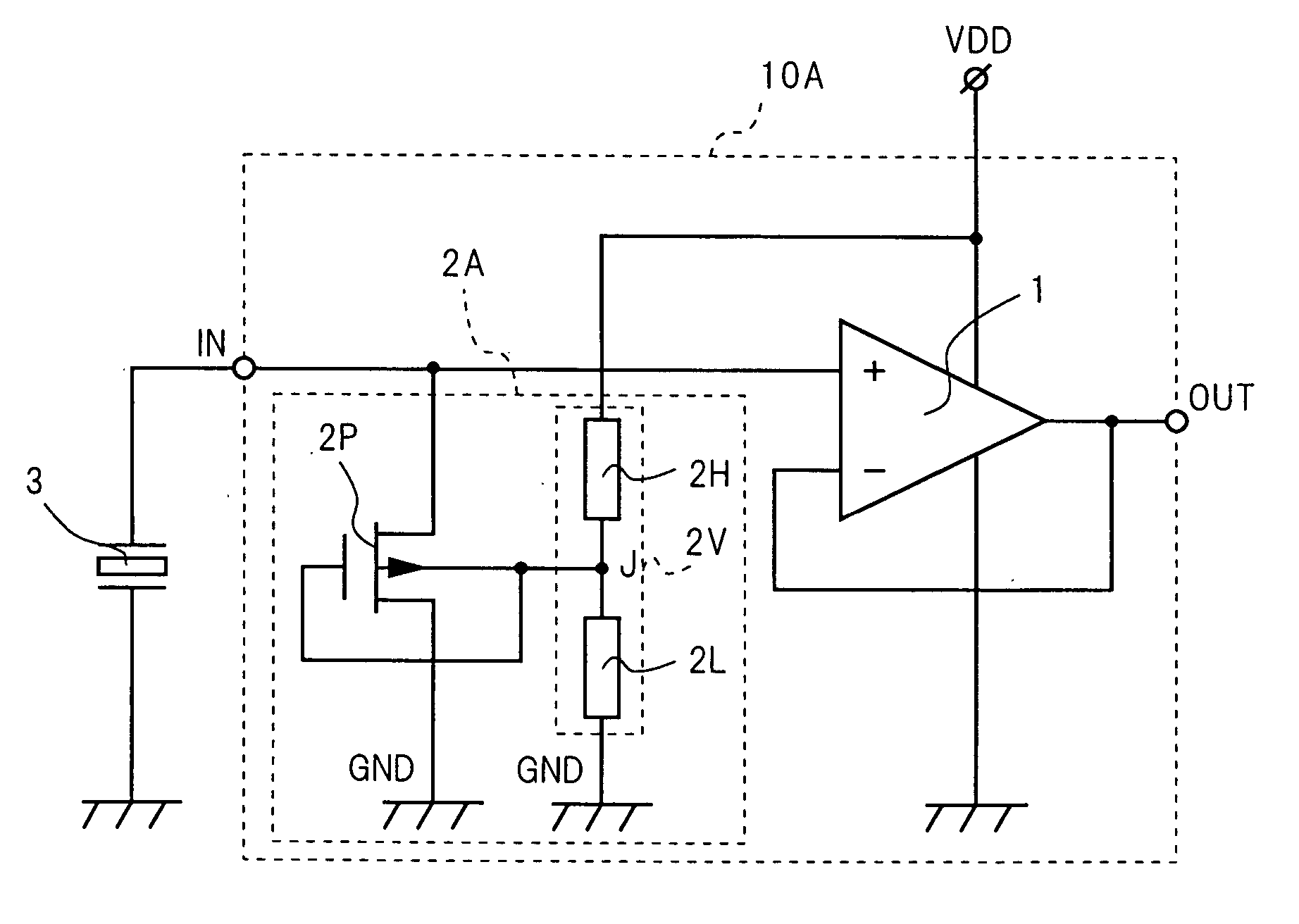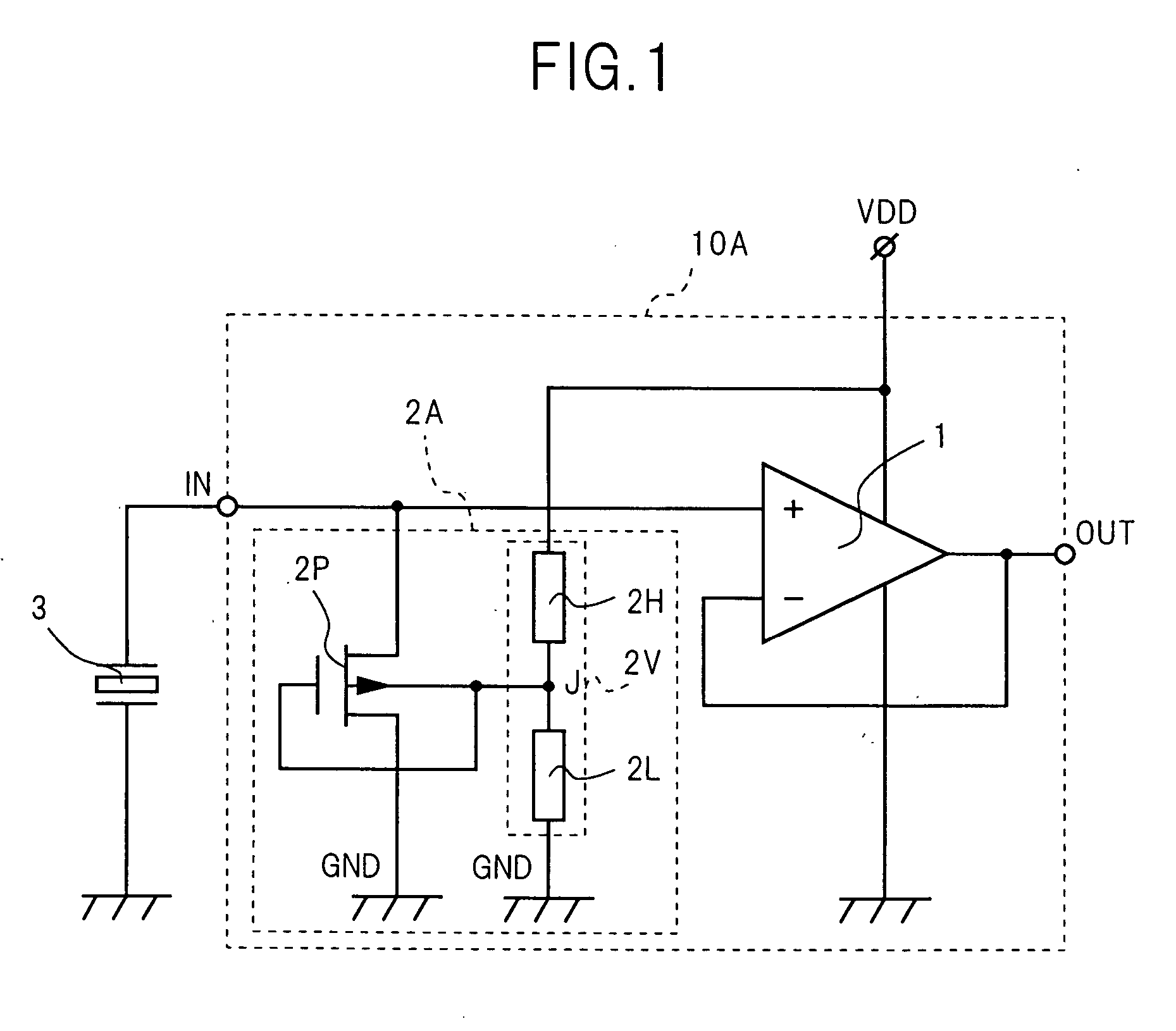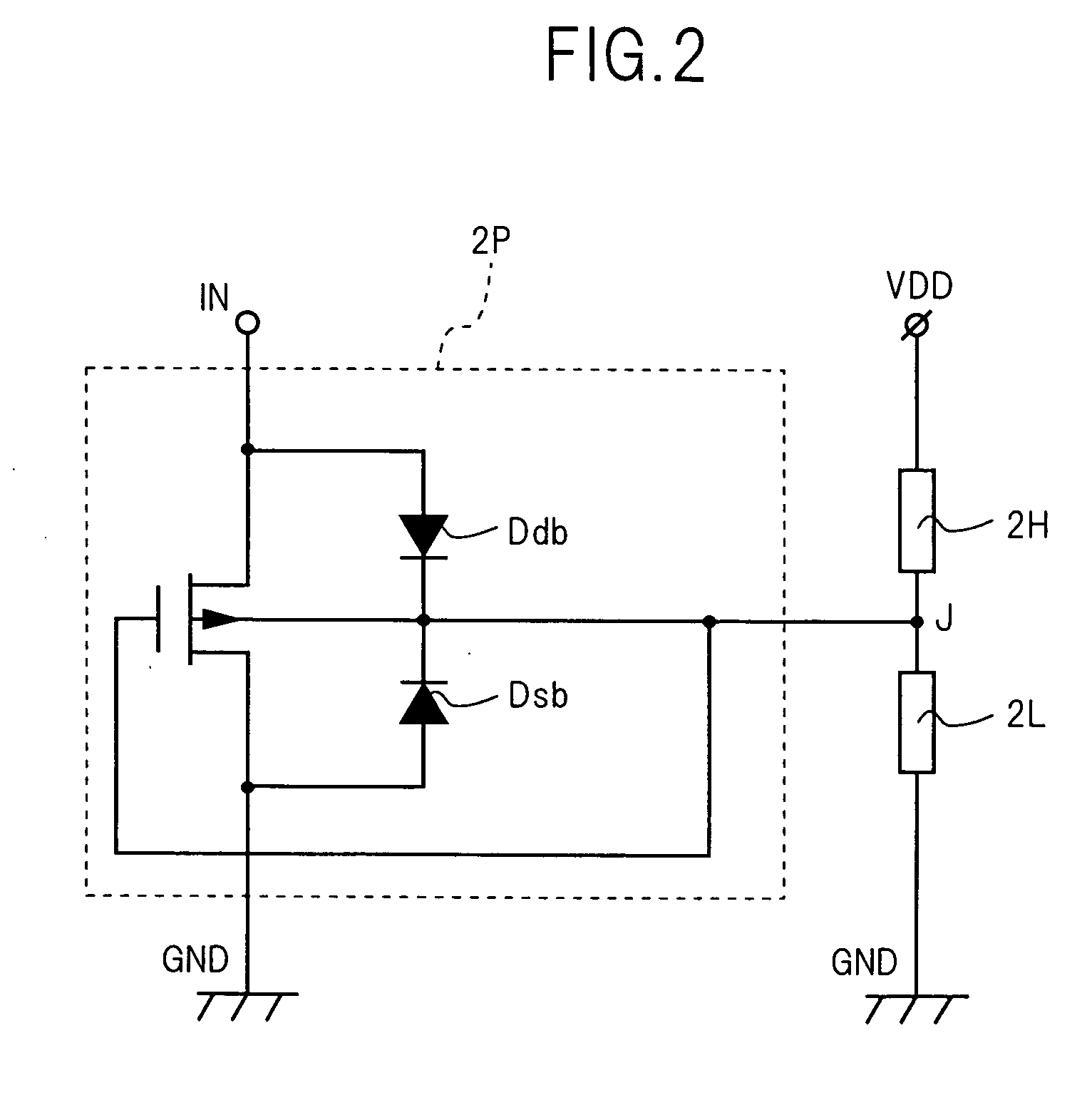Amplification device with a bias circuit
- Summary
- Abstract
- Description
- Claims
- Application Information
AI Technical Summary
Benefits of technology
Problems solved by technology
Method used
Image
Examples
embodiment 1
[0044] An amplification device according to Embodiment 1 of the invention is preferably used for the first stage of a multistage amplification device. The amplification device amplifies signals provided from, for example, a miniature vibration sensor. The vibration sensor is preferably of a piezoelectric type, which uses a piezoelectric device. The vibration sensor may alternatively be an ECM. An amplification device 10A according to Embodiment 1 of the invention is connected directly to a piezoelectric device 3. See FIG.1. This amplification device 10A is preferably a single integrated circuit, which is embedded on a single substrate. The amplification device 10A comprises a high side power supply terminal VDD, a low side power supply terminal GND, an operational amplifier 1, and a bias circuit 2A. The bias circuit 2A includes a bias voltage generating section 2V and an impedance element 2P.
[0045] The high side power supply terminal VDD is connected to an external constant-voltage...
embodiment 2
[0053] The amplification device 10B according to Embodiment 2 of the invention is connected directly to the piezoelectric device 3, similarly to the amplification device 10A according to Embodiment 1. See FIG. 3. This amplification device 10B is preferably a single integrated circuit, which is embedded on a single substrate. The amplification device 10B comprises a configuration in common with the amplification device 10A according to Embodiment 1, except for the configuration of a bias circuit 2B. In FIG. 3, the components similar to the components shown in FIG. 1 are marked with the same reference symbols as the reference symbols shown in FIG. 1. Furthermore, for the details of the similar components, the explanation about Embodiment 1 is cited.
[0054] The bias circuit 2B includes a p-channel MOSFET 2Q for use as an impedance element, similarly to the bias circuit 2A according to Embodiment 1. However, the gate of the p-channel MOSFET 2Q is connected to the drain, in contrast to t...
embodiment 3
[0058] The amplification device 10C according to Embodiment 3 of the invention is connected directly to the piezoelectric device 3, similarly to the amplification device 10A according to Embodiment 1. See FIG. 4. This amplification device 10C is preferably a single integrated circuit, which is embedded on a single substrate. The amplification device 10C comprises a configuration in common with the amplification device 10A according to Embodiment 1, except for the configuration of a bias circuit 2C. In FIG. 4, the components similar to the components shown in FIG. 1 are marked with the same reference symbols as the reference symbols shown in FIG. 1. Furthermore, for the details of the similar components, the explanation about Embodiment 1 is cited.
[0059] The bias circuit 2C includes an n-channel MOSFET 2N for use as an impedance element, instead of the p-channel MOSFET 2P, in contrast to the bias circuit 2A according to Embodiment 1. The n-channel MOSFET 2N is of an enhancement type...
PUM
 Login to View More
Login to View More Abstract
Description
Claims
Application Information
 Login to View More
Login to View More - R&D
- Intellectual Property
- Life Sciences
- Materials
- Tech Scout
- Unparalleled Data Quality
- Higher Quality Content
- 60% Fewer Hallucinations
Browse by: Latest US Patents, China's latest patents, Technical Efficacy Thesaurus, Application Domain, Technology Topic, Popular Technical Reports.
© 2025 PatSnap. All rights reserved.Legal|Privacy policy|Modern Slavery Act Transparency Statement|Sitemap|About US| Contact US: help@patsnap.com



